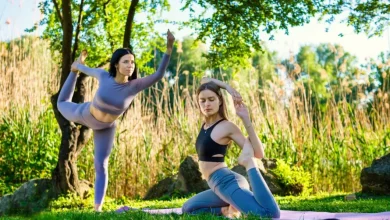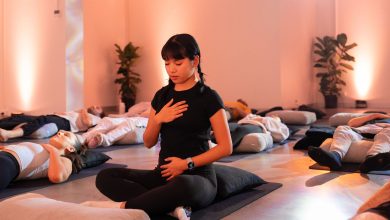This Simple Daily Habit Can Help Ease Chronic Pain—According to Experts

Living with Pain That Never Ends
Imagine waking up every morning and feeling that same dull ache in your joints… that burning sensation in your back… that tightness in your muscles that refuses to go away. For millions of people worldwide, this isn’t a rare bad day—it’s life with chronic pain.
It can quietly steal your joy, drain your energy, and make even simple tasks feel impossible. Pain medications help, but only temporarily—and often come with side effects no one wants to live with forever.
But what if relief didn’t come from another pill?
What if the real solution was something much simpler… something you could do every day, naturally, and for free?
The Silent Epidemic: Chronic Pain in Modern Life
Chronic pain affects more than 1 in 5 adults globally. That’s hundreds of millions of people struggling every single day with arthritis, back pain, migraines, or nerve-related conditions.
Doctors describe chronic pain as pain that lasts for three months or longer, but those who live with it know—pain becomes a part of who you are. It impacts how you move, how you sleep, how you think, and even how you feel about yourself.
The most heartbreaking part? Many sufferers begin to believe that nothing will ever help them again.
But researchers are now discovering that certain daily habits—small, intentional actions—can play a major role in calming the nervous system, reducing inflammation, and restoring a sense of control.
And one of these habits stands out as surprisingly powerful.
The Habit That’s Changing the Game: Mindful Daily Movement
It sounds simple, almost too simple—but experts agree: gentle, mindful movement is one of the most effective ways to ease chronic pain.
This doesn’t mean pushing through grueling workouts or lifting heavy weights. It’s about reconnecting your body and mind through intentional, slow, and healing movement.
It can be as easy as:
- A 10-minute morning walk,
- A few minutes of gentle stretching or yoga,
- Or even deep breathing with light motion to loosen tight muscles.
Dr. Amy Cuddy, a pain researcher and body-mind connection expert, says,
“When we move with awareness, we teach our body to trust itself again. Pain thrives on fear and tension—movement breaks that cycle.”
Why It Works: The Science Behind Movement and Pain Relief
The connection between movement and pain relief is more than just psychological—it’s biological.
Here’s what happens inside your body when you move:
1. Endorphins: Your Natural Painkillers
When you engage in light physical activity, your body releases endorphins, powerful chemicals that act like natural pain relievers. They calm the nervous system, elevate mood, and reduce pain perception.
2. Improved Blood Flow
Gentle movement increases circulation, which helps deliver oxygen and nutrients to damaged tissues and removes toxins that can worsen inflammation.
3. Rewiring the Brain
Chronic pain can “rewire” your brain to stay in pain mode—this is called central sensitization. But when you move regularly, especially with mindfulness, you help retrain your brain to interpret sensations more accurately.
4. Reducing Stress Hormones
Stress and pain are tightly linked. Movement lowers cortisol, the stress hormone, which in turn reduces inflammation and pain flare-ups.
In short: your body wants to heal—movement helps it remember how.
A Morning Ritual That Sets the Tone
If you live with chronic pain, mornings can be the hardest. Stiffness, fatigue, and that sinking dread of another painful day can feel unbearable.
That’s why experts recommend starting your day with a simple, mindful ritual.
Here’s one you can try tomorrow:
- Before you get out of bed, take three deep breaths. Feel your belly rise and fall.
- Stretch your arms and legs slowly, waking up your muscles gently.
- Sit up and roll your shoulders in slow circles, releasing tension.
- Stand up and walk slowly, noticing how your body feels without judgment.
This simple practice takes only 2–3 minutes, yet it can shift your nervous system from “pain mode” to “healing mode.”
What Experts Say: The Mind-Body Connection Is Real
Medical experts are now embracing what ancient traditions like yoga and tai chi have taught for centuries: the mind and body are not separate.
Dr. Lorimer Moseley, one of the world’s leading pain scientists, explains:
“Pain is not just a signal from the body—it’s an experience created by the brain. When we change how we move, think, and breathe, we can literally change how our brain perceives pain.”
In studies, people who practiced mindful movement experienced:
- 30–50% reductions in pain intensity
- Improved flexibility and balance
- Better sleep quality
- Lower anxiety and depression levels
It’s not magic—it’s your body doing what it’s designed to do when given the right conditions.
The Emotional Side of Pain—and How Movement Heals It
Chronic pain doesn’t just hurt your body—it can crush your spirit.
It isolates you. It makes you feel misunderstood. It makes every day a battle.
But movement reconnects you with something deeper—hope.
When you move, you’re telling yourself:
“I’m still in control. I’m still capable. I’m still me.”
Even if the pain doesn’t disappear overnight, you begin to rebuild trust in your body. Every stretch, every breath, every walk becomes an act of self-compassion.
And over time, that compassion is what leads to transformation.
Building Your Daily Habit: Step-by-Step Guide
If you’re ready to try this for yourself, here’s how to build this healing habit step by step:
Step 1: Start Small
Don’t aim for perfection. Start with just 5 minutes a day. Consistency matters far more than intensity.
Step 2: Choose Your Movement
Try gentle yoga, stretching, walking, tai chi, or even slow dancing in your room—whatever makes your body feel good.
Step 3: Add Mindfulness
Focus on your breathing, your posture, and how your body feels. Avoid judging your pain—just observe.
Step 4: Pair It with Music or Nature
Soft music or being outdoors can enhance relaxation and boost your mood.
Step 5: Track Your Progress
Keep a small journal of your pain levels, mood, and energy. Over time, you’ll notice patterns and improvements.
Step 6: Celebrate Every Win
Even a small reduction in pain or stiffness is worth celebrating. Healing happens in moments, not milestones.
Real-Life Stories: From Suffering to Strength
Sarah’s Story – 45, Teacher
“I was diagnosed with fibromyalgia five years ago. I tried everything—painkillers, injections, and massages. Nothing worked long-term. My doctor suggested daily stretching and mindfulness. I rolled my eyes at first. But after two months, something shifted—I was sleeping better, moving easier, and even smiling again. I still have pain, but it doesn’t control me anymore.”
Tom’s Story – 62, Retired Mechanic
“My back pain was so bad I could barely tie my shoes. I started walking every morning for 10 minutes. Now I walk for 30. The pain’s still there, but it’s quieter. More than that, I feel alive again.”
Stories like Sarah’s and Tom’s remind us: healing doesn’t always come from a prescription—it often begins with a decision.
Other Daily Habits That Boost the Effect
While mindful movement is powerful on its own, pairing it with a few other habits can multiply the results:
1. Hydration
Pain often worsens when your body is dehydrated. Drink enough water throughout the day to keep muscles and joints lubricated.
2. Anti-Inflammatory Diet
Add foods like turmeric, ginger, leafy greens, and berries. Reduce processed sugar and trans fats—they fuel inflammation.
3. Sleep Hygiene
Poor sleep amplifies pain signals. Aim for 7–8 hours of quality rest every night.
4. Gratitude Practice
Writing down three things you’re grateful for each day reduces stress and reframes your relationship with pain.
5. Social Connection
Pain thrives in isolation. Stay connected with friends, family, or support groups. Shared strength heals.
The Expert Consensus: Movement Is Medicine
Across research studies, doctors and therapists agree: movement is not the enemy of pain—it’s the antidote.
Whether it’s a walk in the park, a few yoga poses, or deep breathing at your desk, your body rewards every mindful motion.
The key is consistency.
The magic is simplicity.
And the reward is freedom.
A Message of Hope: You Are Not Broken
If you’re reading this and living with chronic pain, please remember—you are not broken.
Your body is not your enemy. It’s trying to protect you, even if it’s overreacting right now.
Every breath you take, every gentle stretch, every moment of awareness tells your body: “You’re safe. You can heal.”
That’s the real power of this simple daily habit—it helps you reclaim ownership of your life, one mindful movement at a time.
Final Thoughts: One Step at a Time
Chronic pain may be part of your story, but it doesn’t have to be your whole story.
Start today. Move gently. Breathe deeply.
Because that single daily habit could be the bridge between living in pain and truly living again.
As one expert beautifully put it:
“Healing begins when we stop fighting our bodies and start listening to them.”




